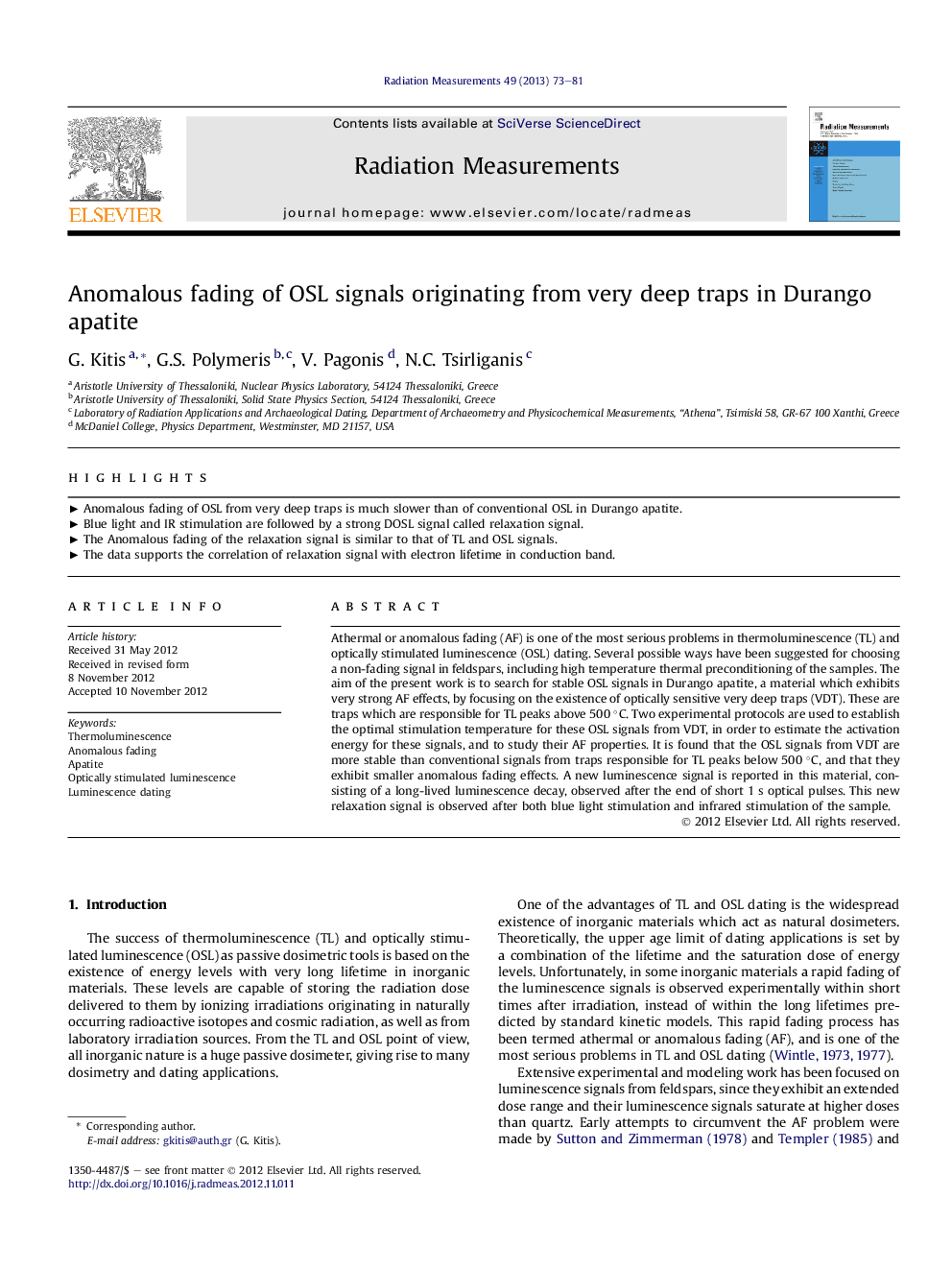| کد مقاله | کد نشریه | سال انتشار | مقاله انگلیسی | نسخه تمام متن |
|---|---|---|---|---|
| 1888421 | 1533439 | 2013 | 9 صفحه PDF | دانلود رایگان |

Athermal or anomalous fading (AF) is one of the most serious problems in thermoluminescence (TL) and optically stimulated luminescence (OSL) dating. Several possible ways have been suggested for choosing a non-fading signal in feldspars, including high temperature thermal preconditioning of the samples. The aim of the present work is to search for stable OSL signals in Durango apatite, a material which exhibits very strong AF effects, by focusing on the existence of optically sensitive very deep traps (VDT). These are traps which are responsible for TL peaks above 500 °C. Two experimental protocols are used to establish the optimal stimulation temperature for these OSL signals from VDT, in order to estimate the activation energy for these signals, and to study their AF properties. It is found that the OSL signals from VDT are more stable than conventional signals from traps responsible for TL peaks below 500 °C, and that they exhibit smaller anomalous fading effects. A new luminescence signal is reported in this material, consisting of a long-lived luminescence decay, observed after the end of short 1 s optical pulses. This new relaxation signal is observed after both blue light stimulation and infrared stimulation of the sample.
► Anomalous fading of OSL from very deep traps is much slower than of conventional OSL in Durango apatite.
► Blue light and IR stimulation are followed by a strong DOSL signal called relaxation signal.
► The Anomalous fading of the relaxation signal is similar to that of TL and OSL signals.
► The data supports the correlation of relaxation signal with electron lifetime in conduction band.
Journal: Radiation Measurements - Volume 49, February 2013, Pages 73–81